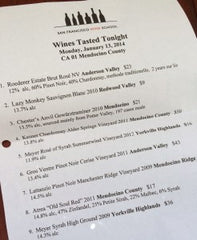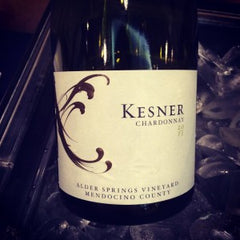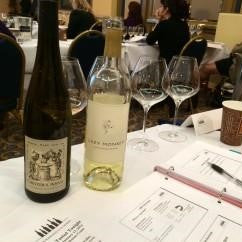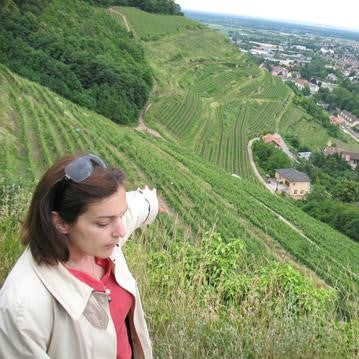California Wine Appellation Specialist ®
Class 1: US/CA Wine Law and Mendocino County
The evening kicked off with a taste of Roederer Estate Brut Rose NV. David kindly said this was for us to enjoy during the first part of the lecture on US and California Wine Law. From there we quickly delved into the nuances of labeling laws, and how much winemakers are allowed to “lie” about what type of grape is in the bottle. He said “lie” for effect but then gave the legal leeway for varietal, origin, vintage and alcohol labeling. It was interesting to note the more stringent regulation in California vs. the rest of the country. There is clearly an important link between the explosion of AVAs in this state and the desire for winemakers to deliver a differentiated product that can compete at retail or on wine lists. I always associated terroir with French wines, but I think we might need an more Americanized version of the word for our very own with all these California sub-regions getting label recognition.
Mendocino, I quickly learned was a prime example. As it turns out, Mendocino Ridge is the only non-contiguous AVA in the United States–why, you might ask? David explained that it’s based on an elevation that creates a unique climate. Imagine sunny vineyards looking out over a sea of fog like islands in the sky with major diurnal temperature shifts that lend a great acidity to the wine without sacrificing ripeness.
We also got a big dose of California wine history. While I know the basics of the 1976 Paris tasting it was interesting to learn how this event marked a turning point in winemaking, not just in California, but around the world.
Overall we tasted 9 wines that illustrated the most important grapes of Mendocino, including an Anderson Valley Pinot Noir. Having previously taken French Wine Scholar (and passed!), the importance of Alsatian grape varieties was particularly interesting to me. We got to try a Chester’s Anvil Gewurztraminer mainly sourced from Potter Valley (only 197 cases made). It had the characteristic peach pit or slightly bitter aftertaste that this grape is known for, along with the requisite rose water and lychee. I love the way David walks through each wine as a blind tasting and asks the class for their thoughts on aroma, flavors, acidity, alcohol, age, oak, and other aspects of wine tasting. David also talked about special, small production Esterlina Dry Riesling from the Cole Ranch AVA and Chateau Montelena Riesling from the Potter Valley. As a lover of this grape, I will definitely be seeking out these two.
 My favorite wine of the evening was the 2011 Kesner Chardonnay from Alder Springs Vineyard that retails for $50. Thanks to a cool climate, it was wonderfully balanced with good acid alongside notes of pear and Vanilla bean. I learned the latter is a hallmark for new french oak. It also lacked the overly butteriness that David explained comes from malolactic fermentation.
My favorite wine of the evening was the 2011 Kesner Chardonnay from Alder Springs Vineyard that retails for $50. Thanks to a cool climate, it was wonderfully balanced with good acid alongside notes of pear and Vanilla bean. I learned the latter is a hallmark for new french oak. It also lacked the overly butteriness that David explained comes from malolactic fermentation.
If you’re interested in trying out a course in the California Wine Appellation Specialist® program view the full syllabus here.
You can also take a full version of the program in an online virtual classroom over a 9-week span, working at your own pace. If you rather get all the information in one big chunk there is a 3-day intensive version.
Have you taken this class or other California sessions from SF Wine School? If so, what was your experience like? What are some of your favorite Mendocino wines or AVAs?
Check out our full schedule of programs, workshops and public events. Private, customized experiences and corporate training is also available.
Learn more about California Wine in our California Wine Appellation Specialist CWAS® Programs.


